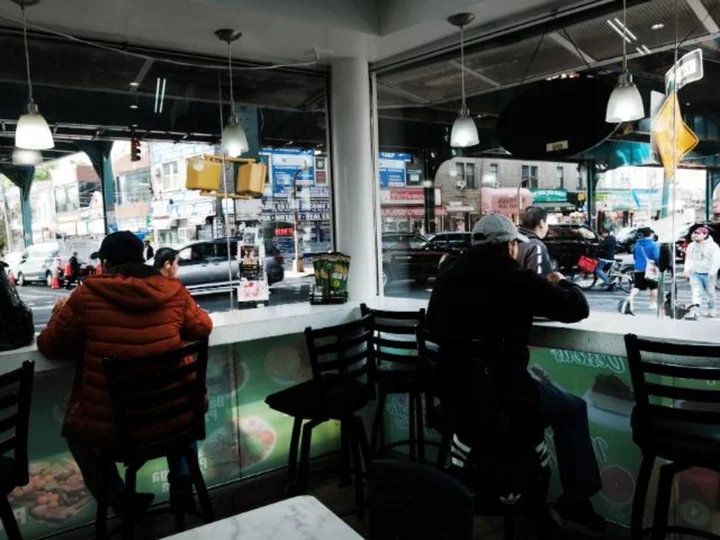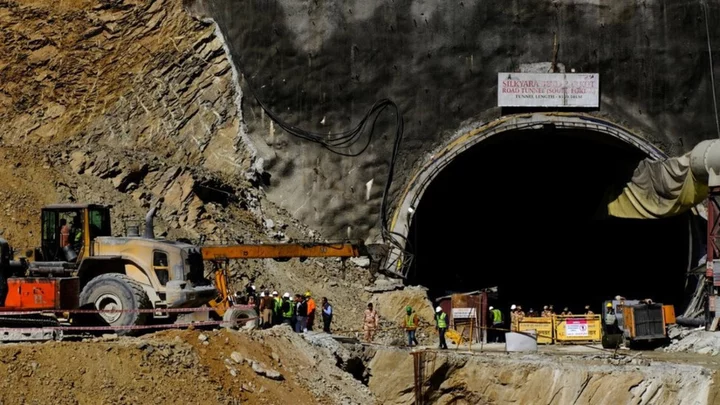In March 2020, many US restaurants had to shut their doors during the early days of the Covid pandemic in accordance with local restrictions. Now, over three years later, the restaurant industry is back. But the pandemic ushered in some changes that are here to stay.
In the early days of the pandemic, people got used to eating their restaurant food at home. Today, they're back in restaurant dining rooms — but still prefer to get meals via the drive-thru, a pickup window or delivery more than they did before. Meanwhile, restaurants are adapting not only to changing consumer behaviors, but to new industry conditions, like a drop in available workers after many exited the sector in recent years.
Here's how things have changed.
Dining rooms are shrinking or disappearing
Before the pandemic hit, Esther Choi's Korean restaurant, Mŏkbar, in Manhattan had counter seats for 20. Now, those seats are gone.
"After the pandemic is when I decided, we're just going to do quick service," Choi told chef Bobby Flay in an episode of "The Whole Story" with Anderson Cooper, on how restaurants are adapting to the new reality. The episode airs Sunday, August 13 at 8 PM ET on CNN.
That decision has led to rising sales, she said. Mŏkbar has also continued to sell meals that customers can reheat at home, and delivers meal kits and kimchi nationally. "I revisited the whole model of the business," said Choi.
"The pandemic taught consumers that you can still have a quality meal, and you don't have to eat it in the restaurant," said Joe Pawlak, managing principal with Technomic, a research and consulting firm that focuses on the food industry.
Restaurants across the country are finding that their businesses can flourish outside of the dining room.
Local favorites, like New York City's Levain bakery and Carbone, a small chain of high-end Italian restaurants, started selling packaged versions of their signature products online and in stores soon after Covid hit, and are still doing so.
And restaurant chains are testing out new, smaller formats that are designed for to-go orders, along with drive-thrus that skip seating altogether.
McDonald's, for example, recently teased a smaller format concept called CosMc's. In the past, before delivery was so popular, smaller restaurants were essentially "off limits," said McDonald's CEO Chris Kempczinski during a recent analyst call.
Other fast food chains, like Taco Bell, are experimenting with drive-thrus that have more lanes and large kitchens, and no dining rooms at all.
Delivery is here to stay
When Covid forced many restaurants to close their doors in 2020, many quickly set up delivery services. Over the past few years, customers developed a taste for the option.
For many restaurants, delivery was a lifeline, but one that came at a high cost. Delivery providers, like DoorDash, Uber Eats and others, stepped in when demand was sky-high, providing an option to restaurants that had never offered delivery before. But they charged high commission fees that ate into restaurants' bottom lines, along with charges for customers.
Some restaurant operators ended up partnering with smaller providers that offered better rates or were more attentive. Ultimately, major players offered restaurants more options, including tiers of service at lower costs.
Still, delivery isn't a great deal for most restaurants, said Pawlak.
"I think restauranteurs still will tell you that for them [third-party delivery] ... still is a difficult proposition, from a profitability standpoint."
Some restaurants, he said, will turn off access to delivery on the weekends or during busy times, when they have plenty of sales in dining rooms.
Even chains that were offering delivery prior to the pandemic are getting squeezed by the growing trend.
Domino's, which has made delivery its calling card for years, has found it hard to find delivery drivers amid the crush of new competitors. For a while, it held off on partnering with outside delivery providers. But in July, it caved, striking a deal with Uber Eats and Postmates to appear on their platform but not use their drivers.
Whether restaurants like it or not, "delivery certainly is here to stay," said Pawlak. But "I think we're starting to see a slowdown in delivery," he noted, because for customers "the price has gotten astronomical."
With prices so high, and customers already pulling back on spending, some may start turning to drive-thru or to-go options, leaving delivery for special occasions.
Still, Doordash reported in August that in its second quarter, overall orders grew.
Too many jobs, too few workers
Early in the pandemic, many restaurant workers got laid off. Others, fearing for their own or their loved ones' health — or simply burnt out by stressful conditions — looked for other jobs and stuck with them.
Now, over three years since the pandemic hit the US, some restaurant jobs remain unfilled.
"The size of the restaurant workforce remains below pre-pandemic levels," the National Restaurant Association said in August, following the July jobs report. "As of July 2023, eating and drinking places were 64,000 jobs — or 0.5% — below their February 2020 employment peak."
Some restaurant operators have reconsidered their business models during Covid, with the goal of offering workers more benefits, consistency and transparency.
Bonnie and Israel Morales, for example, eliminated tips in their restaurant, Kachka, in Portland. They instituted a $25 minimum wage and started charging a mandatory service fee of 22% to offset the costs, they told Flay during Sunday's episode of "The Whole Story."
Donna, a restaurant and bar in New York City, closed during the pandemic and reopened as a worker-owned cooperative.
Restaurant chains have also raised wages a bit in a bid to attract and retain workers. But many of these have at the same time vehemently opposed proposed legislation that could raise the minimum wage for fast food workers.
The industry overall has "to do a better job of showing people... that this is a good career," Pawlak said. "I think we have to start moving up in terms of paying people better."









